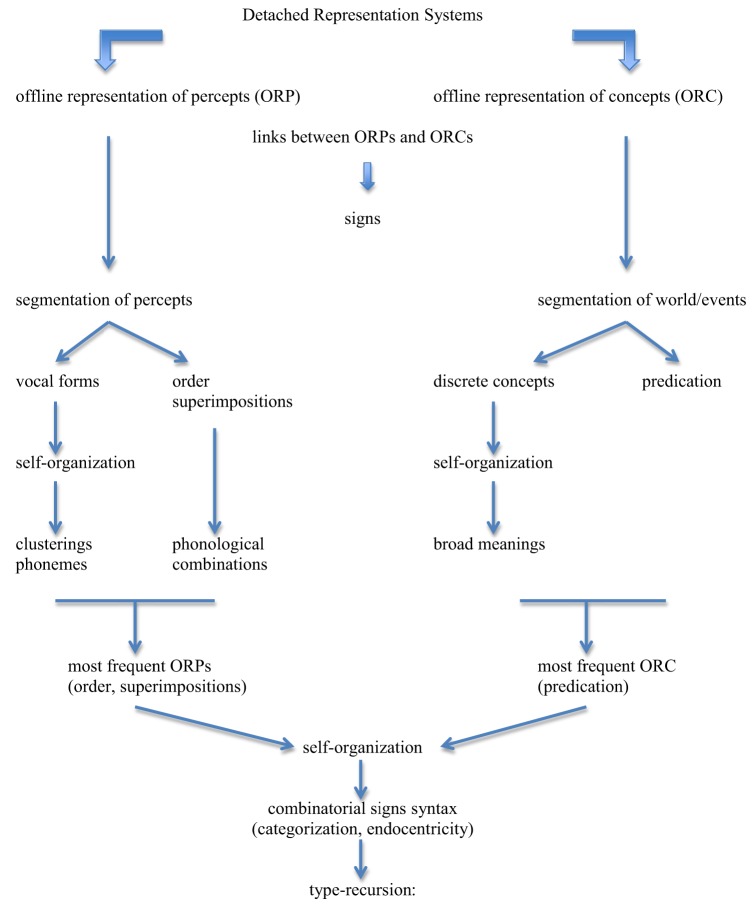Figure 3.
General outline of the model. Detached Representation Systems produce offline representations of percepts (ORP) and offline representations of concepts (ORC). Links between ORPs and ORCs create linguistic signs. These signs have restricted traits because the prior properties of the substances of percepts and concepts severely constrain them. The segmentation of percepts produces a potentially infinite set of vocal forms; these forms undergo self-organization that creates clusterings that result from frequency and accumulation due to ease of production and distinctness of perception: this delimits the set of potential phonemes for languages. The segmentation of percepts also introduces order and superimposition (intonation, length, stress), which derive phonological combinations. The segmentation of world/events produces a potentially infinite set of discrete concepts; these concepts undergo self-organization that creates clusterings that result from frequency and accumulation due to relevance/usefulness for the organism: this delimits the set of broad meanings for languages. Concepts fall in two broad classes, objects and properties, the latter introducing the notion of predication in a broad sense. The most frequent ORP elements are order and superimposition, and the most frequent ORC element is predication. These accumulation points are so overwhelmingly dominant in their respective domains that they increase the frequency of links involving them to the point where these links inevitably develop into combinatorial signs (syntax). Given categorization and endocentricity (due to object permanence), the syntax of languages has the formal property of type-recursion.

